All about belts for oriental dances
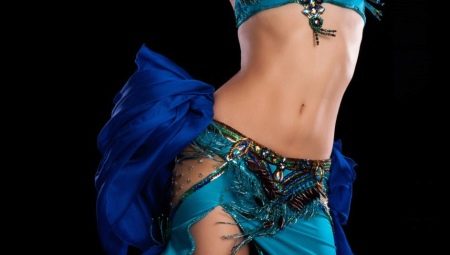
A belt for oriental dances is a very important detail of a performer's costume. What kind of dance belts are, what are their features and how to sew such an accessory yourself, read this article.
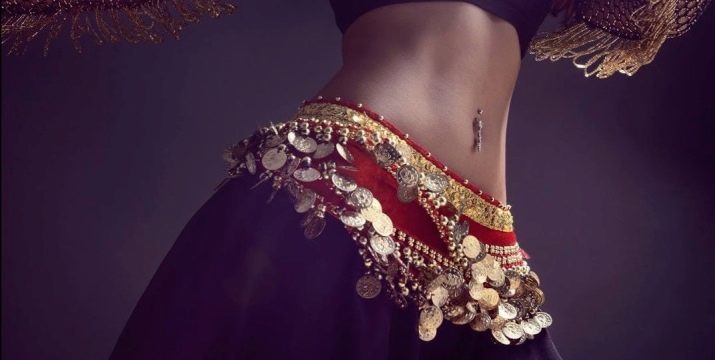
Peculiarities
It is impossible to imagine a costume for oriental dances without such a luxurious accessory as a belt. Bright and catchy, it creates a special mood, emphasizes the grace and plasticity of the performer, the beauty and grace of the dance. Belts are selected and sewn to match the style of the costume, and the appropriate jewelry is selected for it.
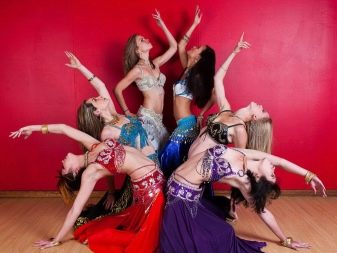
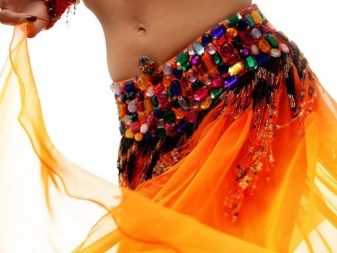

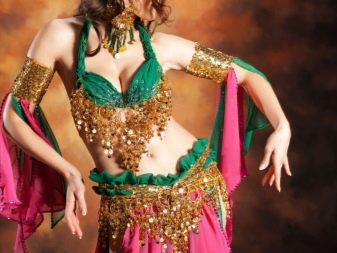
The features of the belts are in their purpose.... There are products that simply decorate the dancer's outfit. These are kerchiefs and loincloths made of various decorative materials.
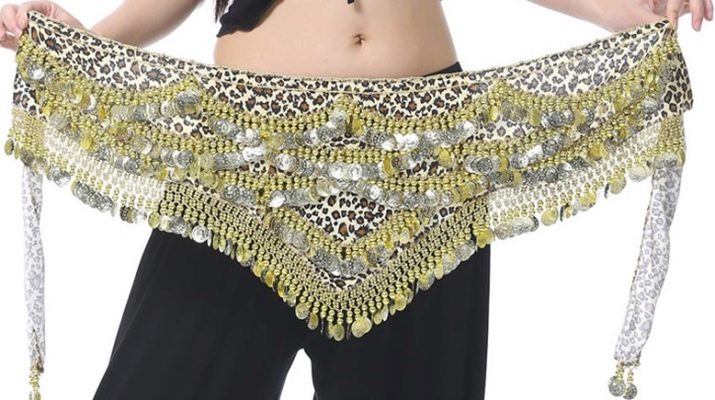
There are rigid options - corsets that help maintain correct posture and distribute the load on the spine during the performance of the number.
The main properties of the product:
- rigidity and strength;
- perfect fit for the figure of the performer;
- comfort and ease of use.
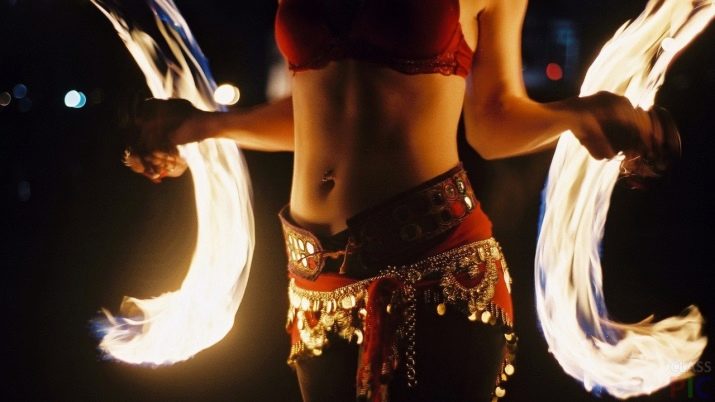
The ideal belt is sewn exclusively by the standards of a woman.... Such products are preferred by professionals and order expensive handmade belts from experienced craftswomen. The requirements for belts of any kind are the same: they should not wriggle and turn over while moving.
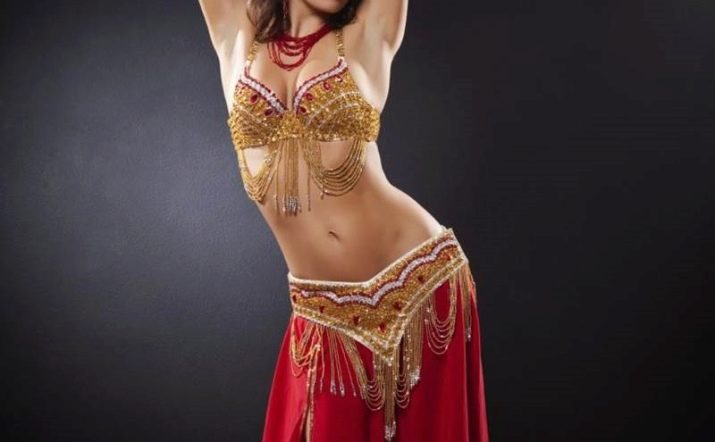
What are they?
Girls who are fond of the art of oriental dance use belts of various styles and styles. These are loincloths, bandages, scarves, shawls. Let's consider how these important details of the oriental costume differ from each other.
By form
Belts are:
- semicircular;
- round;
- rectangular;
- triangular.

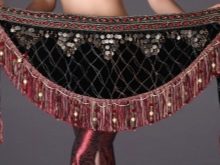

Taking the first steps in this art, a novice performer should definitely try each of the aforementioned accessories in order to determine which version of the belt will be the most comfortable for her figure.
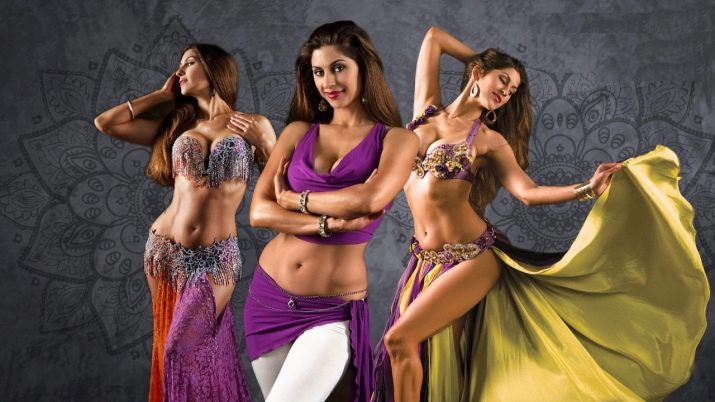
You shouldn't rush to buy an expensive belt of a certain style right away. The girl's body will change during training: extra pounds go away, the abdominal muscles acquire tone, the waist and hips become embossed.
By the presence of jewelry
Shine, flickering and melodic ringing of the decor on the belt in time with the movements of the dancing beauties fascinates the viewer. Accessories with the following decor help to create a magical oriental atmosphere.
- With coins and monists. This option is very popular with beginners. Such products are not very expensive, but they look attractive. The pleasant tinkling of coins and coins during movements always had a magnetic effect on the stronger sex. The only drawback of jewelry is that they very quickly fray the threads on which they are sewn. Experienced dancers advise to sew the belt with a thin line before using it or buy jewelry with better quality coins that have less sharp edges. Then the product will last much longer.


- From sequins. This type of decor creates a special mood, giving the image of the dancer notes of oriental mystery and magic. Especially effective are laser-coated sequins, sparkling in the sun and under the spotlights on the stage. Of course, these decorations do not sound with rhythmic hips, but they shimmer effectively when the body moves in a "wave".
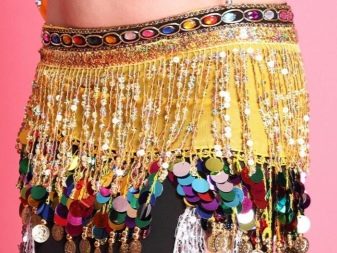

- From beads... Beads and bugles are used both for embroidery and for creating wicker ornaments. Such an element on the belt looks spectacular when practicing various movements. The strings swing beautifully, repeating the amplitude of the dancer's hips, emitting a pleasant melodic rattling. The base of the belt is assembled on a strong synthetic thread, which stretches perfectly for any volume of the hips. The suspensions themselves are assembled on a fishing line or nylon.
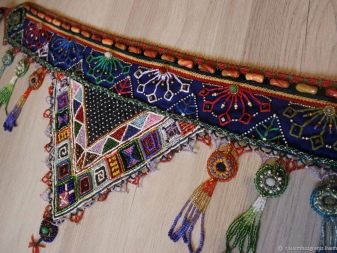

- Fringed. The thread fringe in the form of a skirt looks very spicy. You can complement the decoration with curls made of glass beads or beads. Different textures will draw the viewer's attention to the dance even more. A belt with such a decor is perfectly combined with a tight-fitting skirt, which has become a new trend in modern suits, and with the usual oriental harem pants.
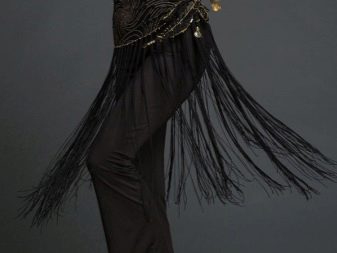
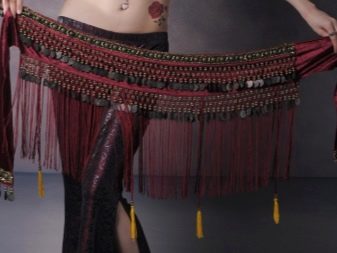
- With embroidery. Embroidered belts are custom made for professional dancers. Skillful craftswomen use decor as adornments, which will require the imagination of the customer. Beads, sequins, bugles, stripes, wooden beads, metal decor already known to you are used. In shops of needlework and sewing accessories, there is a colossal selection of monistas of various shapes, metal sewn laces and a variety of fancy elements, brooches with and without stones. There are belts embroidered with mother-of-pearl and Filipino shells.
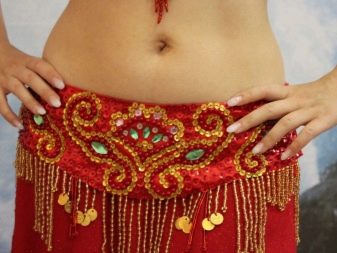

- With lays. An oriental outfit with laces - luxurious lace, decorated with stones and thermal rhinestones - looks gorgeous on a graceful female body. The special magic of weaving is in perfect harmony with the movement of the performers and the enchanting oriental music. They create chic suspensions from the laces. Hand-made items rather than store-bought items look especially beautiful.

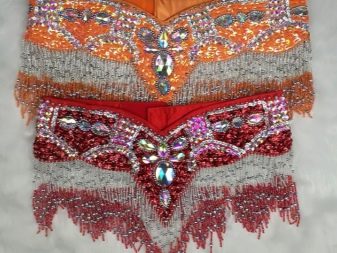
- Metallic... Such monolithic products are very durable and strong. Individual elements are attached to such a belt on metal rings and it is very easy to replace them if necessary.
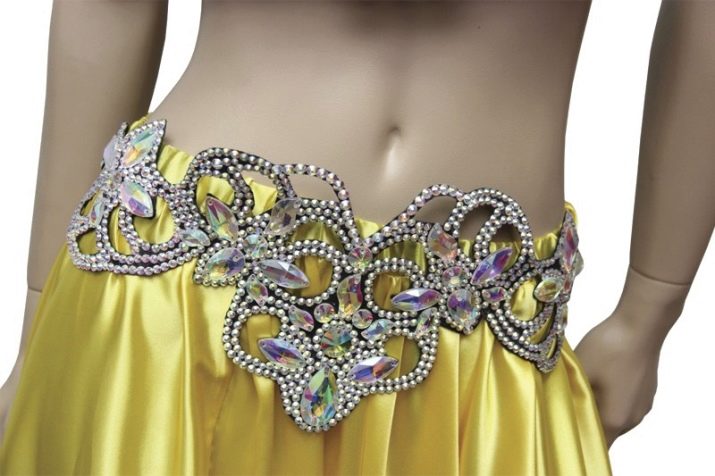
When choosing jewelry, remember that their excessive abundance will make the belt heavy and will interfere with movement during the dance.
How to do it yourself?
The simplest options for belts that you can make yourself:
- knitted shawl;
- hip scarf;
- bandage.
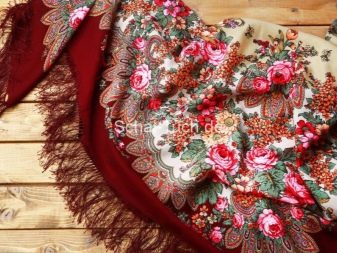

Knitted
Knitted hip scarves, shawls and headbands are crocheted or knitted from fine cotton yarn. The pattern is chosen airy, lace, with large arched openings.
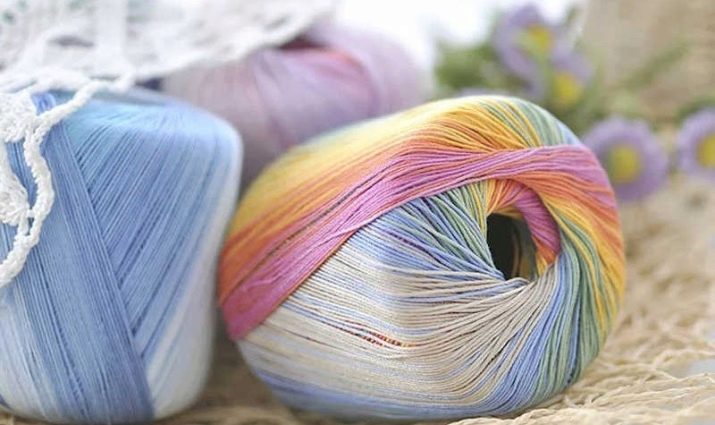
Even a beginner needlewoman can cope with a simple crochet scarf option. It is enough to know the simplest techniques and be able to read elementary diagrams. A triangular knitted shawl will be an excellent accessory for rehearsals, perfect as a children's option for decorating a costume.

Stitched
A dance shawl can be made from thick chiffon, rayon, organza, or stretch velvet. They effectively emphasize the hips and do not constrain movement during the performance.
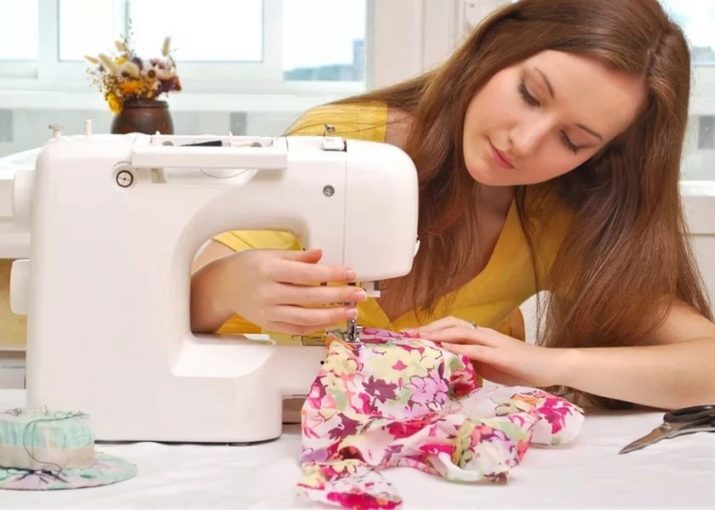
It is better to choose a material that does not stretch, so that over time your belt does not turn into a frill. It is good if the edges of the fabric do not peel off and do not require additional processing.
Product sizes may vary. Large scarves and hip shawls are more suitable for professional dancers. They are also used in dance with hand movements. Beginners should sew small accessories.
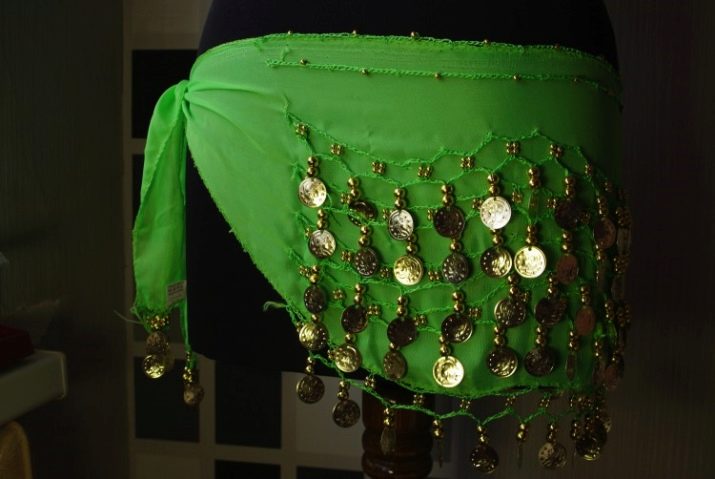
Options for scarves that you can sew yourself.
- Rectangular... Its size depends on the desire of the dancer. It can be small (200x80 cm) or voluminous (300x150 cm). The classic version is an accessory measuring 22x110 cm or 150x25 cm. The seams of the material are processed manually or with a regular zigzag stitch on a sewing machine. The next step is to create a pendant to which the jewelry is attached. You can crochet it, weave it from beads or sew on a suitable braid in the form of a mesh.
- Round... Such shawls are made cut. A common option is a product with a diameter of 220 cm. The finished circle is clearly cut along the radius in one place and the seams are carefully processed so that the fabric does not puff and looks neat. The "overhang" of the scarf is created in the same way as in the first version.
- Semicircular... A very convenient option for those who are just starting to dance. Sewing it is also very simple. The size can be selected individually, and strings can be sewn to the edges for convenience. After that, you can start decorating.
- Rigid belt. It is ideal if the product is sewn according to the individual measurements of the customer by an experienced craftswoman. The easiest option is to make a belt out of old jeans. This will give the garment the necessary rigidity and a good fit. The accessory is trimmed with a dense opaque fabric - velvet or brocade and decorated to your liking. The belt should be wide, but no more than 20-25 cm. You can give it any shape the hostess wants.
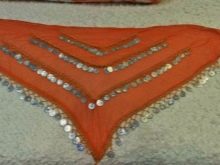
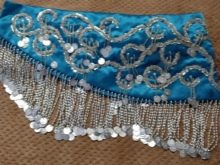
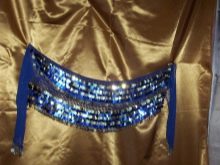
It is important to remember that the accessory should be held not on the waist and abdomen, but on the dancer's hips.
You can sew a belt yourself like this.
- Make a pattern for the product, having previously measured the volume of your hips and waist.
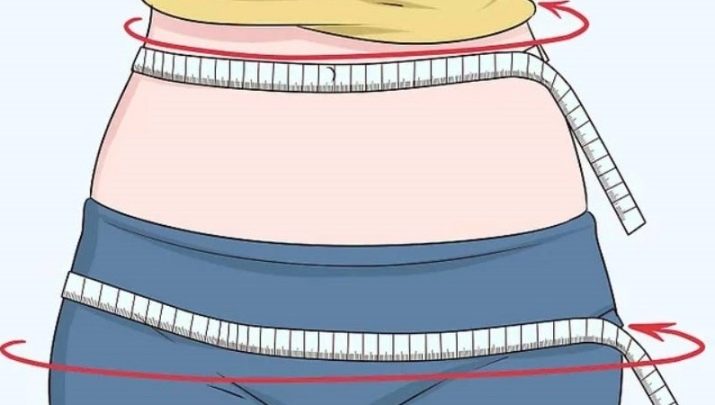
- Take the doublerin and circle the pattern 2 times, since we will have a double belt.
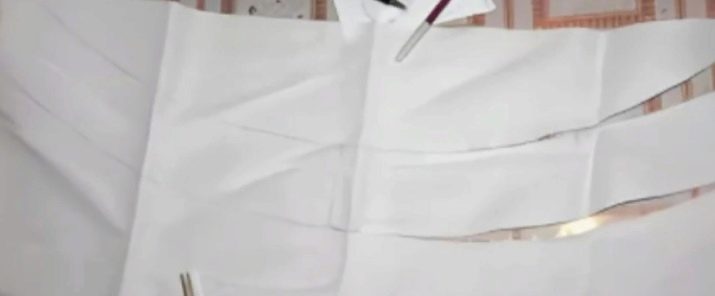
- We set aside space for fasteners on each edge, if they are planned on both sides. If the fastener is on one side, then we leave a small supply of fabric.

- We circle and carefully cut out the pattern. With the sticky side down, put the dublerin on the fabric and iron it on top with an iron.

- We cut the material along the contour, stepping back 2 cm along the edges for a fold. Tuck in the edge and sew with neat stitches.

- You can simply sweep the product and then sew it on a typewriter. After that, we process the edge of the belt with an oblique inlay. To be sure that the product will not twist and slip on the body, it is good to sew a silicone tape on its inner side. It sticks to the body and will not allow the product to move during the performance of the number.

- Lining the wrong side with a cotton fabric. It not only absorbs sweat, but also protects delicate skin from contact with tough knots and threads on which jewelry is sewn.
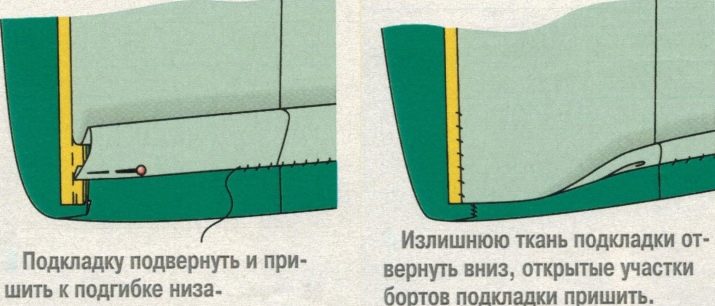
- The last step is decorating the belt. A canopy is sewn along the edge of the product. Brakhtins - heavy threads with embellishments - are fixed not to the inlay, but to the fabric itself, next to the inlay.
Your belt is ready.

For information on how to sew a belt for oriental dances, see the video below.








